Within one of the greatest human densities on our planet lie sanctuaries for wildlife where the relics of Gondwanaland endure. Although separated by the Middle East, the Red and Arabian Seas, and the Indian Ocean, there remains an incredible parallel between the wildlife of the Indian Subcontinent and Africa. Rhinoceros, elephant, wild dog, lion, leopard, antelope, and wild pig—while evolutionarily distinct—call both regions home. It is indisputable that Africa remains the world’s great wildlife haven in sheer volume however few realize that India boasts three of the four panthera species of cat, two bear, three wild ox, eight deer species, 1,225 species of birds, and is considered to be the birthplace of the wolf.

In the central province of Madhya Pradesh, Kanha and Bandhavgarh National Parks are two of the most well-established areas for consistent tiger sightings, and as with all apex predators, where you find tigers you also find an umbrella of biodiversity. Kanha is famous for its mature sal trees and beautiful, grassy maidans. Bandhavgarh—an ancient fortress—boasts precipitous plateaus, rolling hills, and stone relics of its dynastic history leading back to the 1st Century B.C.
They are popular regions for safari and at times can feel crowded, although regulations have further restricted the maximum vehicle numbers. Tigers are the main act, and are seen about every five days on average. Due to the park’s mature trees and dense vegetation, safari in India is exclusively on-road driving and requires some patience if you want to avoid zipping around from water hole to water hole in search of tigers. Tigers, by nature, are elusive creatures that require expansive territories so they cannot be expected to be found in great quantity. We were fortunate to spot one tiger in each park. Our best tiger sighting was in Kanha where we spotted a tigress calmly sauntering down the street towards our vehicle—the only vehicle nearby. After walking the road for a while, she quickly lept into the dense forest followed immediately by a cheetal (spotted deer) calling in alarm and darting across the road with its tail in the air.
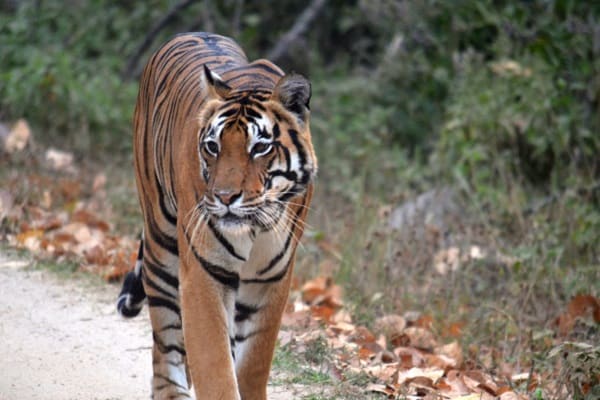
Bandhavgarh proved to be very fruitful for sloth bear. We encountered a female with her cub and a brief sighting of a third bear in the remote Zone 3. We were able to observe the well-habituated female and her cub as she dug for insects deep in the earth.
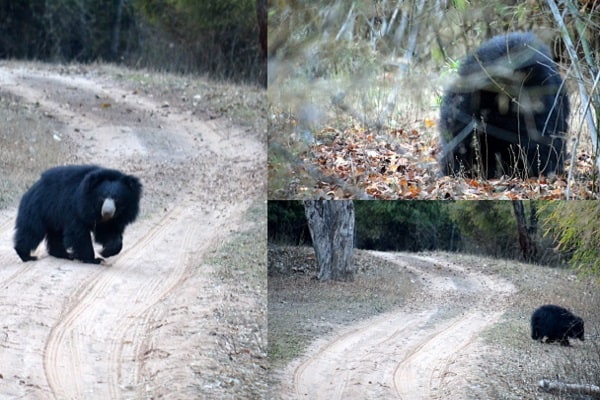
Birding is excellent in India with an abundance of migratory birds and fifty endemic species. We saw owls and eagles every single day of the trip. Vultures are steadily returning after a population plummet from domestic cattle prescription pain killers, which have since been removed from the market. Much like Africa’s lilac-breasted and Eurasian rollers, the Indian Roller boasts brilliant shades of blues, and of course no one can forget the magestic Indian peafowl.
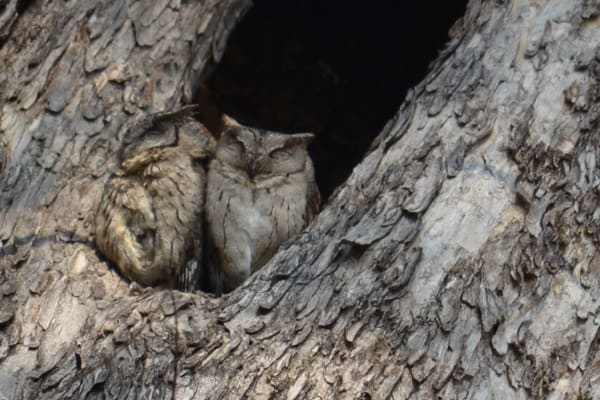

From Madhya Pradesh, we continued to the far eastern province of Assam to experience the “Ngorongoro Crater of India.” Kaziranga National Park’s tourism season is only a few months long before the floods from the Himalayas reclaim the area. It is a haven for one-horned rhino, so many that it is easy to forget they are endangered. The Brahmaputra River creates white sand embankments and vast waterways and is one of the few areas in the world where you can see otter and rhino in one setting.
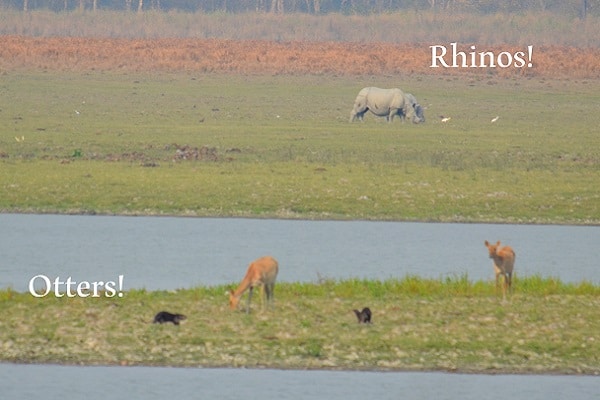
The tall elephant grass makes spotting tigers very challenging, but we were fortunate to observe a male traversing the water’s edge from a watchtower at sunset. Our naturalist guide, who spotted the tiger, was beaming with pride and satisfaction as many guides spend decades in Kaziranga without a sighting.
A favorite past time in Kaziranga is elephant back safari. While this is a must-do novelty, it is actually an excellent way to get up close to the one-horned rhino and experience the height of the elephant grass. Plus, the baby elephants follow their mothers through the ride and when you walk down the stairs after disembarking, they often greet you with their dexterous trunk! We visited just after Holi Festival, and some of the elephants still had remnants of their paint from the celebration. As a public holiday, there were no rides that day, so the mahouts had decorated their revered animals just for their own celebrations. One afternoon, returning from the park to the Diphlu Lodge, were joined a mahout as he bathed his elephant—a daily ritual for them.
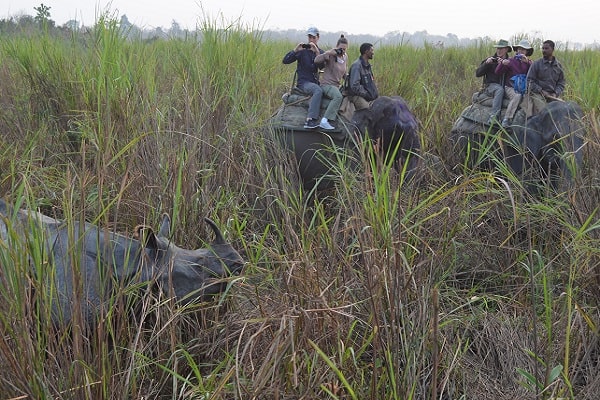
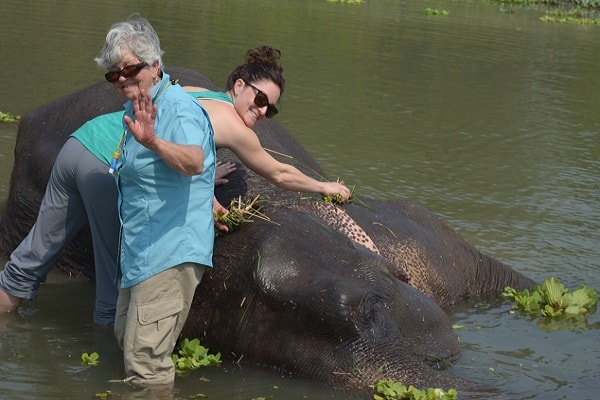
After two weeks on safari, we all agreed that we could have spent another two weeks exploring the cities and rich cultural heritage of India. There is far too much to do in one American-sized holiday, and while many people say I.N.D.I.A. stands for “I’d Never Do It Again,” we were protected from this sentiment through our wonderful hosts and the respite from city chaos that the parks provide.
Tips for India Safaris:
- An interest in a diversity of species, especially birds helps to appreciate this unique wildlife experience. The parks are isolated islands of wilderness surrounded by civilization and so the mammal species cannot be found in such abundance as in Africa. This makes it all the more important to accompany a guide who can interpret and find the wildlife.
- The parks are closed on Wednesday afternoons. While many people plan to be traveling this day so as not to miss out on any park activities, it’s also a great time to visit a local village, go for a hike, or visit a tea plantation.
- Tiger permits are broken into zones in each park. While some zones are sold as premier locations, it is impossible to predict the movements of the wildlife months in advance. Make sure you plan well in advance and request a variety of zones so you are not in one area—or even on one road the entire time.
- Quality varies drastically from camp to camp and day to day. Select camps that can offer good quality naturalist guides to join you on every game drive. The drivers and park guides are on a constant rotation through the union and quality is more difficult to predict, so having a good naturalist guide with you is very important.